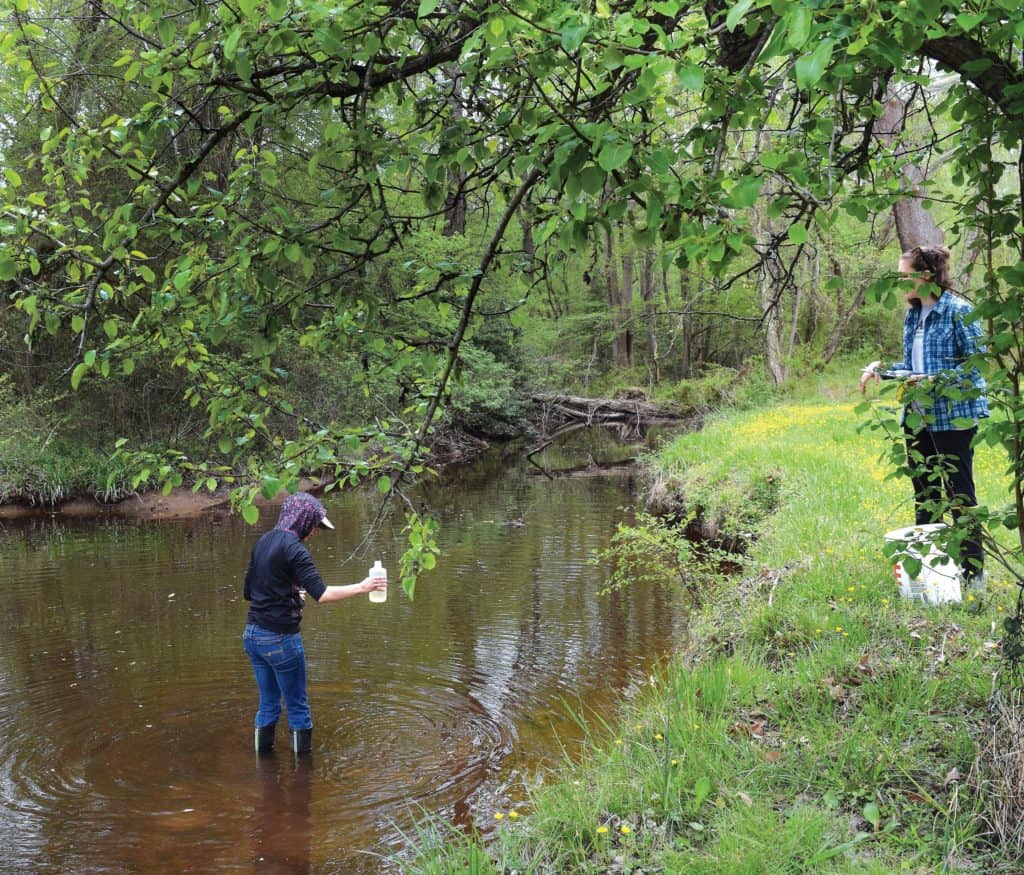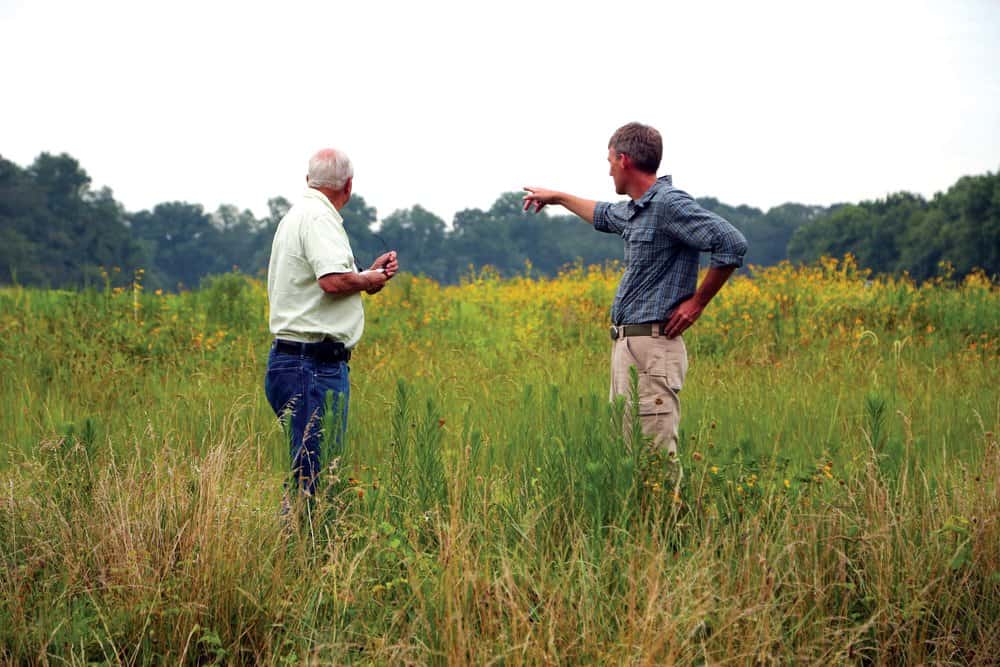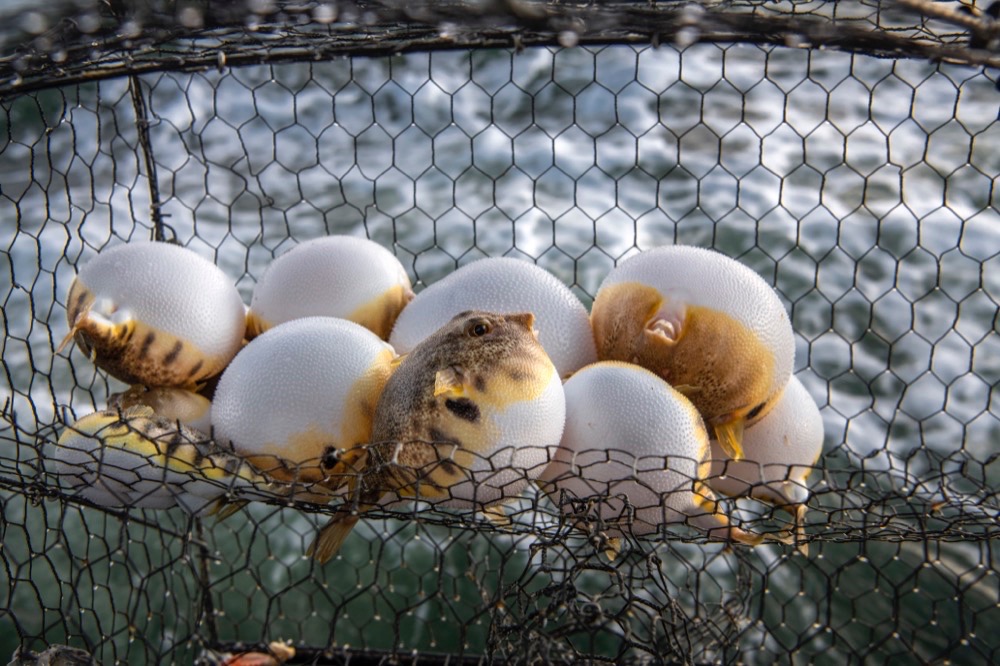SERC volunteer Kara Skipper takes a water sample in the Potomac River. The research teams sampled nearly 200 locations in 12 tributaries across Maryland. ( Smithsonian Environmental Research Center photos)
Smithsonian researchers use DNA to track an elusive species
Kimberly Richie scrambles down a steep embankment past the rusty cab of a truck embedded in the hillside and pauses on the bank of the Patapsco River. A technician at the Smithsonian Environmental Research Institute (SERC), Richie is here to track river herring. These small fish are actually two species—alewife and blueback herring. They live most of their lives at sea, returning to rivers to spawn in the spring. Both species are in steep decline.
Richie wades in, opens a one-liter bottle, and submerges it. Then, in less time than it took to don her hip waders, her sampling is done. The bottle contains only river water, and the fish are nowhere to be seen.
This new technique for finding fish is called environmental DNA, or eDNA. The team Richie works with at SERC is among the first to use it in the Chesapeake Bay watershed. Fish leave behind scales, eggs, and waste as they swim. It all contains DNA. Geneticists can extract that DNA from the water, figure out which species it came from, and get a general idea of how abundant they are.
Richie’s team is using the method to create a map of where river herring spawn throughout the watershed. Fisheries biologist Matt Ogburn heads the effort.
“It was something that we recognized early on, that we would want an efficient way to sample a lot of sites,” he says. Because of the simplicity of the sampling technique, his team has been able to sample more than 200 sites on tributaries all along the Bay. Those tributaries, along with most of the rivers along the East Coast, once churned with river herring. A century ago, watermen on the Choptank River caught millions each year.
“Some of the first Europeans in the U.S. said you could smell the fish before you even saw the stream they were spawning in,” Ogburn says. Pollution, overfishing, and dam construction have since caused populations to plummet so drastically that the federal government is considering listing them under the Endangered Species Act—a decision on their status is expected early this year.
The decline of river herring affects the many animals that eat them—osprey, otters, cod, cormorants, salmon, striped bass, bald eagles and so on. Ogburn hopes that by studying where river herring are still returning to spawn in relatively healthy numbers, we can improve those places where they aren’t doing so well. But finding and counting fish isn’t always straightforward.
“If you have a fish tank in front of you, you can count how many fish are in it,” Ogburn says. In a river, they’re more elusive. “It matters whether you sample day or night, it’s warm or cold, or it has rained recently. It’s really hard to know how many fish are there.”
Fisheries biologists have numerous tools for tracking down their research subjects. Electrofishing is common. But sending electrical pulses through the water and netting stunned fish requires more than one person, and it isn’t practical for very deep or wide streams. Nets designed to catch eggs and larvae are standard tools. But this approach requires hours of picking through dead leaves and muck to find the eggs, some of which are impossible to identify by species. High-definition sonar, basically a souped-up fish-finder, is another way to track fish. But a unit can cost $90,000, and must remain in one site all season to be effective.
Still, eDNA has its own challenges. Louis Plough of the University of Maryland Center for Environmental Science’s Horn Point Laboratory is the geneticist who decodes SERC’s water samples. He says it’s impossible to know if a given DNA sample came from one big fish or ten little fish, five minutes ago or a week ago. But Plough can see whether river herring are in a particular stream and whether there seem to be more in one place than another.
Moving forward, Ogburn wants to use eDNA to study some of the manmade structures that block river herring from their spawning grounds. “There are tens of thousands of culverts and road crossings all throughout the Chesapeake Bay watershed,” he says. Ideally, all of them would be redesigned with spawning fish in mind. But funds are limited. Ogburn wants to use environmental DNA to identify the spots where a culvert redesign would give conservationists the biggest bang for their buck.
“The state highway administration replaces a bunch of culverts every year,” he says. “If there’s a way we can incorporate information on river herring into decisions on which ones are priorities, we can both benefit fish and make the road infrastructure more resilient.”
So far, the team has discovered that there seem to be more river herring on the Bay’s eastern shore than the western. And alewife appear to be more prevalent on the eastern shore, while blueback herring are more common on the western. No one knows why that’s the case, but it could have implications for how we manage these fish in the future, and eDNA gives researchers an important new fact-finding tool.
“The fact that water records something about the recent history of who’s been in the river,” says geneticist Plough, “that’s really powerful.”




